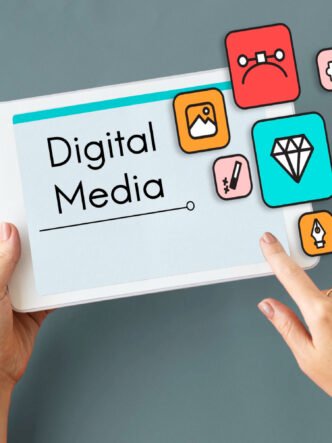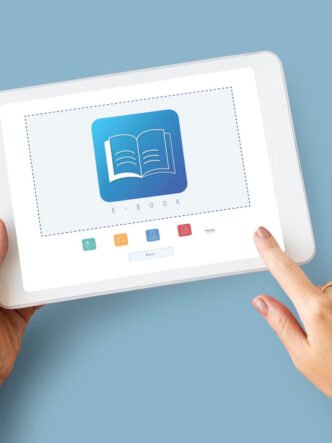Workplace learning is an ongoing process that allows employees to acquire, update, and apply their knowledge, skills, and competencies. It can include both formal and informal learning activities. Top companies need to use employee development if they hope to remain competitive.

Section 1: Why workplace learning is critical for modern organizations
Skills development: Workplace learning provides the best way to equip employees with the knowledge and skills they need to perform their roles and improve their productivity. They are more able to adapt to changing technologies and industry trends.
Employee retention: Showing a commitment to professional development contributes to employee satisfaction and retention. Continuous learning is crucial for them to stay current in rapidly evolving workplaces.
Organizational growth: Investing in workplace learning means employees have the skills that align with strategic organizational goals and can contribute to its growth and success. Top companies today are setting new standards in workplace learning and taking innovative approaches.
Section 2: Case Study 1 – Netflix
HR leaders at the streaming giant realized early on that building a strong company culture was the way to find and retain top talent. Its strategies focus on empowering employees, valuing their diverse perspectives, and enabling them to keep learning and improving together. The whole emphasis is on empowering employees rather than controlling them. Trust, growth, and rewards are key elements of workplace learning.
Bootcamp: The Pathways Bootcamp Program runs for 12 weeks. It’s a part-time training program that equips employees with development skills.
Mentoring: Netflix employees have the opportunity to engage with mentors who can help them with career development. Managers often serve as coaches and offer guidance and expertise to employees.
Inclusion and diversity of thinking: Netflix actively recruits employees from diverse backgrounds, cultures, and disciplines. The company benefits from a diversity of thinking that can catalyze creativity and innovation. Everyone can drive new initiatives and contribute to ideas as they work towards shared goals.
Continuous learning: After they complete the boot camp, employees can access training materials and online tutorials. They can learn how to deal with common challenges the streaming industry faces. From technical subjects to soft skills, they can always keep expanding their knowledge and skills.
Feedback: Peer-to-peer feedback is ongoing and helps to enhance relationships across teams. Feedback doesn’t just focus on areas for improvement but also offers appreciation for work well done which helps to boost morale.
The focus on the well-being of its workforce rather than immediate business gains allows Netflix to attract top employees and retain them. The unique employee-centric approach has driven great success in the streaming industry.

Section 3: Case Study 2 – Siemens
Siemens is a global leader in technology and engineering. Employee development has always been part of its corporate philosophy. However, it had to swiftly change its in-person learning model during the pandemic.
Quick deployment of digital learning platforms: It quickly deployed digital learning platforms using some of its existing technologies and investing in new solutions. A mix of synchronous (live sessions) and asynchronous (on-demand learning) modalities ensures accessibility and flexibility.
Personalization through AI: Siemens incorporated artificial intelligence (AI) to personalize the learning experience. This enables it to accommodate the diverse learning styles and needs of its global workforce. AI algorithms recommend courses based on learning history, roles, and individual skills. This makes learning more effective and relevant.
Encouraging digital literacy: Employees received basic training on how to use the digital learning platforms and on best practices for virtual collaboration.
Using gamification and virtual reality: High-quality interactive content includes gamified learning modules and virtual reality (VR) scenarios. This includes the use of quizzes, badges, leaderboards, and scenarios where employees must find solutions to real-life problems.
One of the outcomes was a more inclusive learning environment where everyone could learn at their own pace and from anywhere. Personalization led to efficient learning pathways where employees didn’t have to waste time learning unnecessary information. Siemens could rapidly upskill its workforce in areas that aligned with key business needs. The cultivation of a culture of learning made employees feel more empowered to take ownership of their development.
Section 4: Common themes and best practices
The above corporate learning case studies can help you to identify some common themes and best practices when it comes to workplace learning.
The use of dynamic interactive digital learning platforms: Webinars, virtual classrooms, and e-learning modules allow you to deliver accessible training content. Live streaming of webinars offers employees the opportunity to ask questions and participate. On-demand courses and tutorials allow employees to enhance their skills when it’s convenient for them and at their own pace.
A culture of continuous learning: Learning is ongoing so it’s important to build a culture of continuous growth and learning. You can use mentorships, collaborative learning, and knowledge exchange to create a dynamic workforce that emphasizes skill enhancement. Video messaging allows employees to ask quick questions about training and get immediate feedback.
Immersive learning: Immersive and hands-on learning helps with skill development. Employees need practical experience within a controlled environment. This means integrating initiatives such as role-playing, simulations, and real-world projects. Having to apply knowledge in live scenarios can improve retention rates and skills transfer. It also cultivates problem-solving skills and collaboration.
Personalizing training programs: Personalization helps you to cater to the diverse needs and preferences of your workforce. You can accommodate different learning styles and career objectives. By using analytics and employee feedback, you can identify skill gaps and customize training materials to fill them. Personalized learning paths and competency-based training modules can maximize potential and performance.
Cross-functional learning: Collaboration across departments and functions can drive innovation. This may include using cross-departmental projects, interdisciplinary workshops, and job rotations. Cross-functional learning breaks down silos and can lead to a more cohesive workforce that can tackle complex problems.
Section 5: How to apply these strategies in your organization
Implementing workplace learning initiatives will need to take into account your industry, the size of your company, and your goals. You need to identify the training needs of your employees and the resources they need to acquire knowledge. It must be possible to deliver the right content to them when they need it.
Using a dynamic platform for your learning content enables you to offer more engaging, and readily accessible workplace learning. The Cincopa video hosting platform allows you to host workplace learning content. You can manage it, measure it, and deliver it in a secure way. You have access to live streaming capabilities and employees can benefit from on-demand videos to learn from anywhere at their own pace.
Employees can share training resources securely with access controls to limit unauthorized access. They can also benefit from other security measures like encryption. You can access advanced video analytics to measure the success of your workplace learning strategies and improve them.
Some strategies to use in your organization include:
Make learning easily accessible. Employees should have the freedom to decide where, when, and how to learn.
Offer bite-sized learning content to make learning easier to retain. Sometimes you need to forget about linear learning and enable employees to find ‘just in time’ solutions to problems. Applying bite-sized learning immediately in their daily tasks helps them to remember what they learn.
Empower employees to follow their own learning paths. You can put in place a framework that allows them to learn organically and make choices. For example, they should be able to skip modules that they feel they don’t need.
Create more opportunities for employees to collaborate and learn from one another. At top companies, much learning is often imparted by peers.
Embrace mobile workplace learning as employees can benefit from instant information while on the go.
Creating modular training allows employees to choose a specific module rather than having to complete an entire course.
Make content searchable and keep in mind that employees will probably access learning on different devices. On the Cincopa home page, you can see the solutions and resources it offers, including easy search options and facilitating quality video playback on different devices.
Conclusion
If you want to implement workplace learning strategies and track your employee development initiatives, it is worthwhile exploring the Cincopa platform. It can help you to offer meaningful, timely, and engaging workplace learning. You can see data analytics that gives you insights to assess learning and improve it.









